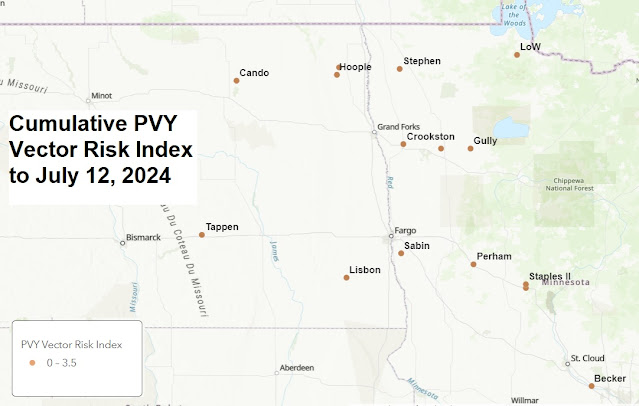Trap Catches to July 05 - July12, 2024.
With 10 traps reporting, we have seen an increase in per trap capture numbers. That said, our regional populations remain low and are tracking behind 2023. Temperatures are rising and aphid reproduction is responding. Remember, aphids, at this time of year are all female. And they give birth to live offspring, the maturation rate of which increases with temperature, until the temperatures reach an upper threshold. Meaning aphid populations can increase rather rapidly at this time of year. So, as the summer warms up, we're going to see increasing aphid populations and we expect to see increasing vector movement.
We're also starting to see some important vectors, including one capture of Green Peach Aphid. This is not surprising given our weather systems. Green Peach Aphid, the most efficient vector of PVY, does not over winter here but in states to the south. Our populations in the Red River Valley of MN & ND are re-established annually by individuals that catch a ride on low-level jet streams. This is often the case when we're getting storms from the south. Populations become established in the region, populations rise and move between potential crop hosts. With rates of population growth responding to rising temperature, vector numbers usually increase.
So... Keep on scouting!



